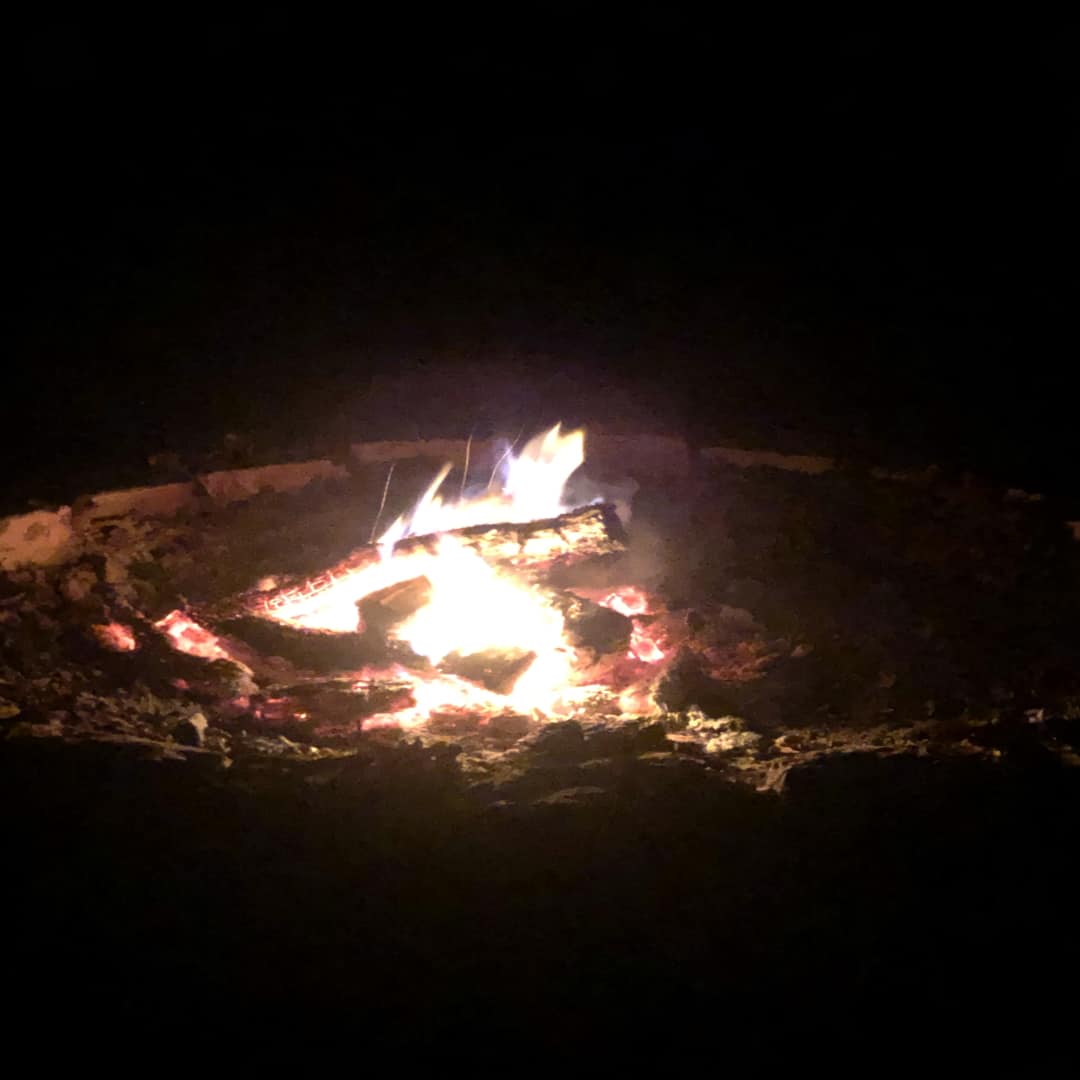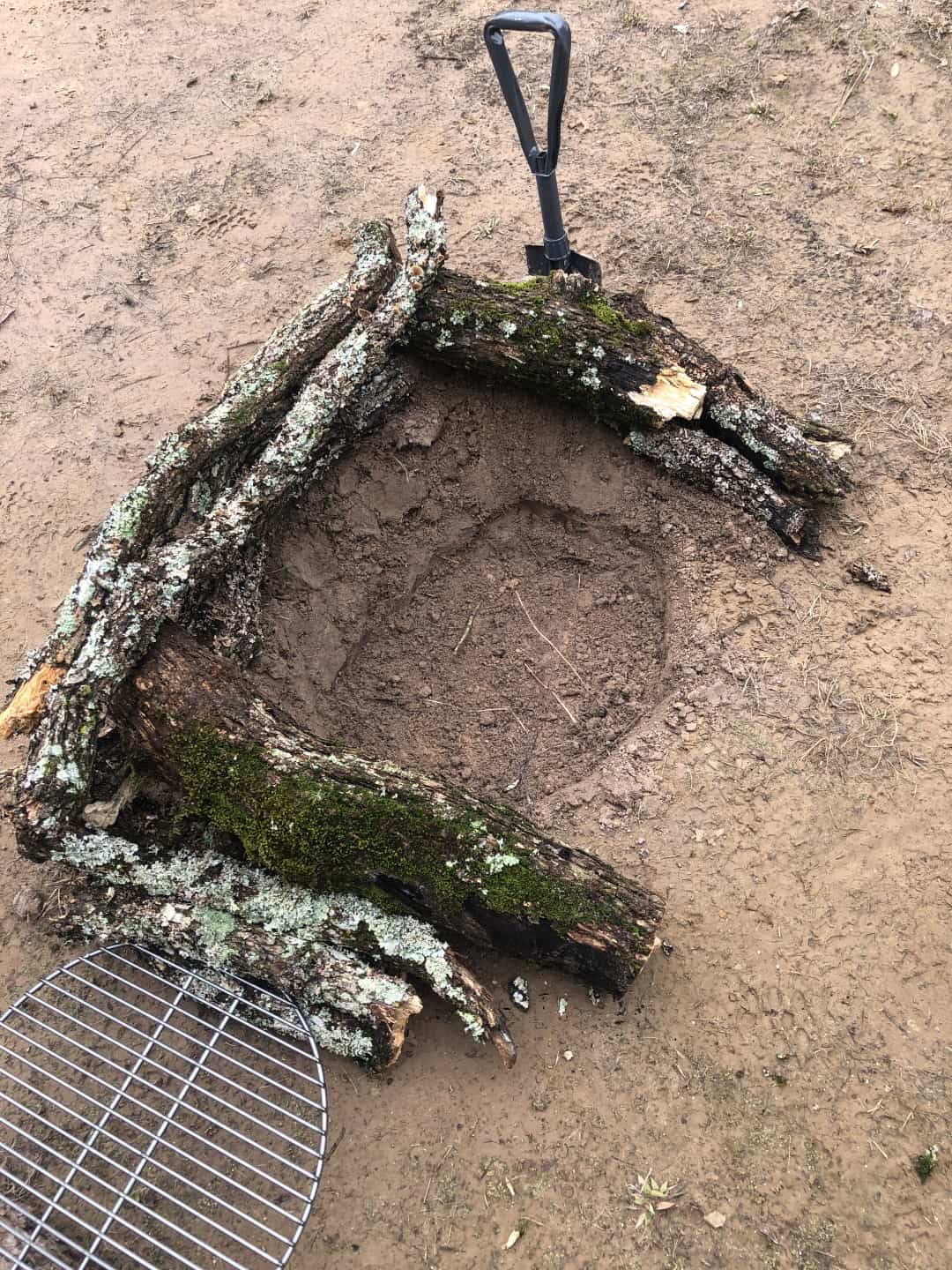How to Make a Campfire
If you click and purchase with one of our links, we earn a commission. Thanks.
Are you planning on going camping, but you have no idea how to start a campfire? Nothing beats the joy of sitting around a campfire as you sip hot coffee (read how to make coffee while camping) while enjoying your friends’ company.
However, making this a reality is quite challenging even for most people, but this doesn’t have to scare you. With this camping fire building techniques, you can learn how to be a pro at making campfires.
A campfire from a group camping trip in Novemer 2020

1. Build a Campfire Pit
The first step to building a campfire is making a fire bed. Most camping sites have designated areas where you make your camping fire. If you are not sure whether to build a fire in that area, you can ask the campground operator. Remember, not all areas are campfires permitted. However, most allow fires as long as their guidelines are followed.
If the area doesn’t have any designated area for fires, you need to build one like this:

How to Build a Campfire Pit
- You should start by clearing any vegetation or low hanging branches because the fire’s embers can easily ignite them. An unwritten rule is choosing a flat area that is at least 3 meters away from vegetation.
- Choose a place that is not in strong winds because the coals can be easily spread to other sites. You can choose an area behind a hill or with other wind blockers such as tall trees.
- Ensure the location of the fire is far away from where you intend to sleep. If you are sleeping in a cabin, ensure the fire is further away from it. This prevents the cabin or sleeping materials from catching fire when sleeping.
- Set up a containment ring for the campfire by removing any flammable materials around the area.
- Dig a hole similar to a bowl and of about 5 inches deep. However, the bowl’s width will largely depend on the size of the fire you want to build.
- Form a diameter ring using larger rocks. Keep in mind that the stones should be dry; otherwise, you risk an explosion when you use stones that have been submerged in water. If your camping site has available fire pits, all you need to do is remove any flammable materials around it. You may also have the option of building a mound fire, which is basically a raised mound of soil about 8 inches high. The mound works as the base of the fire.
2. Fetch Firewood
The next logical step after building your fire bed is getting the necessary fuel. There are three types of fuel that you can use when looking for ways to make a fire. These fuels include kindling, firewood, and tinder.
Kindling is simply small sticks, while tinder consists of twigs and dry leaves, which may keep the fire burning for a while. Firewood, on the other hand, is much more significant pieces of wood that last longer.
Though you may be tempted to carry your firewood when going camping, it is not recommended. Carrying firewood from outside, is against the rules of the most campsite as the woods can bring in foreign insects.
Ensure you gather wood from the campsite but further away from the fire pit. The wood should also be completely dry for it to burn out effectively. Also, ensure you only collect firewood that is no thicker than your wrist to ensure they completely burn out.
3. Ways to Build a Fire
Now that you have all the necessary materials, its time you build a fire. To effectively build one, you need to know the type of lay you’ll be making.
- The first is the teepee or cone lay. This is where you lay kindling then followed by tinder before finally topping with the firewood. Remember to only add the firewood when the fire is going on strong.
- Log Cabin. This is my preferred lay because the structure holds best. Place two logs parallel to each other on the ground. I place the kindling sticks across the logs. Then I place at least 2 fuel logs on top of the kindling, going the same way. You can add more fuel logs but they would be placed across the first layer of fuel logs so that you have a square hole in the middle. However, don’t fill out the spaces; otherwise, there won’t be any oxygen flow to keep the fire burning.
- Pyramid. This is set up involves laying logs side by side from the bottom, then doing the same on your 90-degree angle. The process continues bit with much smaller wood as you go up before finally topping them up with kindling and tinder.
The fire you intend to build will depend on why you need it. A campfire is often used to keep you warm, but sometimes you may want to cook food as you warm yourself. In such a case, you need to keep that in mind.
Remember, for an effective cooking session; all the wood has to burn evenly; this means no flames should be reaching up to the cookware.
How to Build a Campfire for Cooking
- Start by selecting the site. Of course, you have already established this from the first step on how to build a campfire pit.
- Use rocks to form a U-shaped perimeter then place a large rock behind the other rocks to act as a chimney. The purpose of the rock is to direct smoke away.
- Place the tinder on the available area before placing kindling on top of them in an alternative manner. Ensure the whole area is covered with the kindling.
- Light up the fire, and when the kindling is burning up, add firewood of the same sizes and ensure they are distributed evenly.
- Ensure the wood is burnt completely, leaving coals before you push the coals back or front. Pushing the coals on a higher level at the back and those at the back in front ensures that the heat is distrusted in terms of high, medium, and low.
- Place your grill on top of the rocks before placing your cookware on top of the grill. You can use a spray bottle to shoot down any flames.
4. Light Your Campfire
Now that everything is set, the next step is lighting the fire using a matchstick, a lighter, or a fire starter. Ensure you light the tinder first because it is much easier to light up. You then need to blow it slowly to ensure it doesn’t go off.
Blowing it gives it oxygen, which increases its intensity.
Once your fire is lit it’s ready for warmth, cooking, roasting marshmallows or boiling water.
5. Put Out the Fire
It is important to put off the campfire when you are done camping. Putting it off ensures you don’t cause an unnecessary fire in the forest. If you have no idea how to put off the fire, check with the campsite manager for recommendations. You only need to pour cold water on the ashes to turn them off. It is important not to stand close to the ashes as you pour water; otherwise, you risk burning yourself. Once you have poured sufficient water on the ashes, ensure you touch them to feel whether it is still hot. Always keep in mind that using dirt to put off the fire is not recommended because the chances are that it will insulate the coal and possibly lead to a fire.
6. Clean the Area
Ensure you clean up after you are done with everything. Cleaning up shows that you are mature and that you value nature. When cleaning up, avoid burning plastics. Also, make sure you collect everything that does not completely burn up and dispose of them in their designated places. Make sure you also remove any charcoal pieces and dismantle all the structures you might have built.
7. How to Keep Safe When building a Campfire
Building a campfire is fun and challenging at the same time, but this doesn’t mean that it is not possible to build one. However, you need to remember that there are dangers to building a fire, especially outdoors. With the help of these tips, you can successfully build a campfire and enjoy your time.
- Ensure you only build your campfire when the areas whether conditions are favorable. It is impossible to build a fire when it’s raining. So watch out for any unfavorable weather conditions.
- Don’t rush to burn the fuel, take your time, and ensure your burn them in small quantities.
- Always contain your fire to prevent any unnecessary accidents.
- Always be alert for any type of announcements or bans on the campfire.
- Ensure you remove any flammable materials near the fire that may cause the fire to spread.
- When you are through with the fire, ensure you put it off. Also, don’t leave the fire unattended even if you are not going far.
- Avoid using any type of accelerant to boost the intensity of the fire.
- Don’t light up the fire in strong winds.
Nothing is as exciting as enjoying a night out in the woods with our friends enjoying a campfire. Though you may find it hard to build a campfire, it is much easier when you have all the information at hand.